Performance Indicators of Printed Construction Materials: a Durability-Based Approach
Abstract
1. Introduction
2. Normative and Regulatory Contexts
2.1. Prescriptive Approach
- The maximum water-efficiency/equivalent binder ratio,
- The minimum strength class of the concrete, the minimum content of equivalent binder, and the minimum air content.
2.2. Performance Approach
Durability Indicators
- General durability indicators valid for different types of degradation (corrosion of reinforcements, alkali reaction...).
- Sustainability indicators specific to a given degradation process, such as alkali reaction or freezing.
- Porosity accessible to water,
- Diffusion coefficient (apparent or effective) of chloride ions,
- Gas permeability,
- Permeability to liquid water, portlandite content Ca(OH)2.
- Permeability to liquid water varies according to the saturation rate. Figure 4 shows the evolution of water permeability as a function of saturation rates. It shows that for S ≤ 40%, the transport in the liquid phase is negligible, whereas, for the S > 80% domain the increase in relative permeability is very significant [32].
3. 3D Printing for Construction
4. Research Vision
5. Proposed Theory-Based Approach for 3D Printing Process in Construction
- Step 1: Selection of sustainability indicators adapted with additive manufacturing technology (layer-by-layer deposition), such as porosity and sorption, and desorption isotherms.
- Step 2: Experimental campaign according to the procedures defined in this report, in the various standards, and from previous projects; e.g., the characterization of samples taken during the various printing tests.
- Step 3: Determination of the different sustainability indicators using existing correlations and empirical models. The objective is to study the impact of composition and implementation parameters on sustainability.
- Step 4: Prediction of the lifespan of the materials studied and presentation of recommendations for improving formulation and implementation.
6. Research Methodology
6.1. Materials
- Campaign 1: MC14-10-16,
- Campaign 2: MCR19-01-17,
- Campaign 3: MCR20-01-17.
6.2. Accessible Porosity to Water
6.3. Water Absorption
- Mhumide: constant wet mass of the specimen after immersion
- Msèche: constant dry mass of the specimen after drying in the oven
6.4. Wet and Dry Volumetric Masses
6.5. Porosity
6.6. Compressive Strength
6.7. Sorption–Desorption Isotherms
7. Results and Discussion
7.1. Water Absorption
7.2. Compressive Strength
7.3. Sorption and Desorption Curves
7.4. Analysis and the Proposed Durability Approach for 3D-Printed Materials
7.5. Central Role of Rheology as an Indicator
7.5.1. Pumpability Indicator
7.5.2. Shape Stability
7.6. Anisotropy of 3D-Printed Construction Materials
7.7. Methods to Mitigate the Shear Stress Generated by the Printing Process
8. Conclusions
Author Contributions
Funding
Conflicts of Interest
References
- Coppola, L.; Bellezze, T.; Belli, A.; Bignozzi, M.C.; Bolzoni, F.; Brenna, A.; Cabrini, M.; Candamano, S.; Cappai, M.; Caputo, D.; et al. Binders alternative to Portland cement and waste management for sustainable construction—Part 2. J. Appl. Biomater. Funct. Mater. 2018, 16, 207–221. [Google Scholar] [PubMed]
- Coppola, L.; Bellezze, T.; Belli, A.; Bignozzi, M.C.; Bolzoni, F.; Brenna, A.; Cabrini, M.; Candamano, S.; Cappai, M.; Caputo, D.; et al. Binders alternative to Portland cement and waste management for sustainable construction—Part 1. J. Appl. Biomater. Funct. Mater. 2018, 16, 186–202. [Google Scholar] [PubMed]
- Kazemian, A.; Yuan, X.; Cochran, E.; Khoshnevis, B. Cementitious materials for construction-scale 3D printing: Laboratory testing of fresh printing mixture. Constr. Build. Mater. 2017, 145, 639–647. [Google Scholar] [CrossRef]
- Bentur, A.; Mitchell, D. Material performance lessons. Cem. Concr. Res. 2008, 38, 259–272. [Google Scholar] [CrossRef]
- Buswell, R.A.; de Silva, W.R.L.; Jones, S.Z.; Dirrenberger, J. 3D printing using concrete extrusion: A roadmap for research. Cem. Concr. Res. 2018, 112, 37–49. [Google Scholar] [CrossRef]
- Panda, B.; Ruan, S.; Unluer, C.; Tan, M.J. Improving the 3D printability of high volume fly ash mixtures via the use of nano attapulgite clay. Compos. Part B Eng. 2019, 165, 75–83. [Google Scholar] [CrossRef]
- Ma, G.; Wang, L. A critical review of preparation design and workability measurement of concrete material for largescale 3D printing. Front. Struct. Civ. Eng. 2017, 12, 382–400. [Google Scholar] [CrossRef]
- Ghaffar, S.; Mullett, P. Commentary: 3D printing set to transform the construction industry. Proc. Inst. Civ. Eng. Struct. Build. 2018, 171, 737–738. [Google Scholar] [CrossRef]
- Wangler, T.; Lloret, E.; Reiter, L.; Hack, N.; Gramazio, F.; Kohler, M.; Bernhard, M.; Dillenburger, B.; Buchli, J.; Roussel, N.; et al. Digital Concrete: Opportunities and Challenges. RILEM Tech. Lett. 2016, 1, 67. [Google Scholar] [CrossRef]
- [NF EN 206, 2014] Béton—Spécifications, performances, production et conformité. 2014. Available online: https://www.boutique.afnor.org/norme/nf-en-206-cn/beton-specification-performance-production-et-conformite-complement-national-a-la-norme-nf-en-206/article/819603/fa185553 (accessed on 16 April 2019).
- Rozière, E. Étude de la Durabilité des bétons par une Approche Performantielle. These.fr. 2007. Available online: http://www.theses.fr/2007NANT2125 (accessed on 16 April 2019).
- Hooton, R.D.; Bickley, J.A. Design for durability: The key to improving concrete sustainability. Constr. Build. Mater. 2014, 67, 422–430. [Google Scholar] [CrossRef]
- Ollivier, J.-P.; Vichot, A. La Durabilité des bétons: Bases Scientifiques pour la Formulation de Bétons Durables dans leur Environnement. Presses de l’École nationale des ponts et chaussées. 2018. Available online: https://www.presses-des-ponts.fr/notre-librairie/258-la-durabilite-des-betons.html (accessed on 16 April 2019).
- Jiménez, J.R.; Ayuso, J.; Galvín, A.P.; López, M.; Agrela, F. Use of mixed recycled aggregates with a low embodied energy from non-selected CDW in unpaved rural roads. Constr. Build. Mater. 2012, 34, 34–43. [Google Scholar] [CrossRef]
- Paine, K.A.; Dhir, R.K. Recycled aggregates in concrete: A performance-related approach. Mag. Concr. Res. 2010, 62, 519–530. [Google Scholar] [CrossRef]
- [RECYBETON]. Projet National: Le Recyclage Complet des Bétons. 2012. Available online: https://www.pnrecybeton.fr/ (accessed on 16 April 2019).
- [PERFDUB 2015]. French National Project: Approche Performantielle de la Durabilité des Ouvrages en Béton. Available online: https://www.perfdub.fr/ (accessed on 16 April 2019).
- [BHP 2000, 1995]. French National project: Bétons à Hautes Performances, Started in 1995. Available online: https://www.presses-des-ponts.fr/notre-librairie/238-synthese-des-travaux-du-projet-national-bhp-2000-sur-les-betons-a-hautes-performances.html (accessed on 16 April 2019).
- [APPLET, 2007]. French National Project: Durée de vie des Ouvrages en Béton: Approche Prédictive PerformantieIle et Probabiliste, Started in 2007. Available online: https://lasie.univ-larochelle.fr/2007-2010-APPLET-ANR (accessed on 16 April 2019).
- [GranDuBé, 2007]. French National Project: Grandeurs Associées à la Durabilité des Bétons. Presses de l’École Nationale des Ponts et Chaussées, started in 2007. Available online: https://www.presses-des-ponts.fr/notre-librairie/251-grandube.html (accessed on 16 April 2019).
- Baroghel-Bouny, V. Instituto Eduardo Torroja de la Construcción y del Cemento, and Instituto de Ciencia de Materiales de Madrid. In Proceedings of the International RILEM Workshop on Performance Based Evaluation and Indicators for Concrete Durability, Madrid, Spain, 19–21 March 2006. [Google Scholar]
- Jeong, H.; Han, S.J.; Choi, S.H.; Lee, Y.J.; Yi, S.T.; Kim, K.S. Rheological Property Criteria for Buildable 3D Printing Concrete. Materials 2019, 12, 657. [Google Scholar] [CrossRef] [PubMed]
- Paul, S.C.; Tay, Y.W.D.; Panda, B.; Tan, M.J. Fresh and hardened properties of 3D printable cementitious materials for building and construction. Arch. Civ. Mech. Eng. 2018, 18, 311–319. [Google Scholar] [CrossRef]
- Bong, S.H.; Nematollahi, B.; Nazari, A.; Xia, M.; Sanjayan, J. Method of Optimisation for Ambient Temperature Cured Sustainable Geopolymers for 3D Printing Construction Applications. Materials 2019, 12, 902. [Google Scholar] [CrossRef]
- Roussel, N. Rheological requirements for printable concretes. Cem. Concr. Res. 2018, 112, 76–85. [Google Scholar] [CrossRef]
- Baroghel-Bouny, V. Maîtrise de la Durabilité vis-à-vis de la Corrosion des Armatures et de L’alcali-réaction. Guide AFGC Conception des bétons pour une durée de vie Donnée des Ouvrages. 2004. Available online: http://afgc.asso.fr/index.php/component/hikashop/product/9-conception-des-betons-pour-une-duree-de-vie-donnee-des-ouvrages (accessed on 16 April 2019).
- Bai, J. Durability of Sustainable Construction Materials; Woodhead Publishing: Cambridge, UK, 2016; pp. 397–414. Available online: https://www.elsevier.com/books/sustainability-of-construction-materials/khatib/978-0-08-100370-1 (accessed on 16 April 2019)ISBN 9780081009956.
- Villain, G.; Baroghel-Bouny, V.; Kounkou, C.; Hua, C. Mesure de la perméabilité aux gaz en fonction du taux de saturation des bétons. Rev. Française Génie Civ. 2001, 5, 251–268. [Google Scholar] [CrossRef]
- Farnam, Y.; Krafcik, M.; Liston, L.; Washington, T.; Erk, K.; Tao, B.; Weiss, J. Evaluating the Use of Phase Change Materials in Concrete Pavement to Melt Ice and Snow. J. Mater. Civ. Eng. 2015, 28, 04015161. [Google Scholar] [CrossRef]
- Baroghel-Bouny, V.; Mainguy, M.; Lassabatere, T.; Coussy, O. Characterization and identification of equilibrium and transfer moisture properties for ordinary and high-performance cementitious materials. Cem. Concr. Res. 1999, 29, 1225–1238. [Google Scholar] [CrossRef]
- Alrifai, A.; Aggoun, S.; Kadri, A.; Kenai, S.; Kadri, E.-H. Paste and mortar studies on the influence of mix design parameters on autogenous shrinkage of self-compacting concrete. Constr. Build. Mater. 2013, 47, 969–976. [Google Scholar] [CrossRef]
- Coussy, O.; Eymard, R. Non-Linear Binding and the Diffusion–Migration Test. Transp. Porous Med. 2003, 53, 51–74. [Google Scholar] [CrossRef]
- Costa, A.; Appleton, J. Chloride penetration into concrete in marine environment—Part I: Main parameters affecting chloride penetration. Mater. Struct. 1999, 32, 252–259. [Google Scholar] [CrossRef]
- Francy, O. Modelisation de la Penetration des Ions Chlorures dans les Mortiers Partiellement Satures en eau. Toulouse 3. 1998. Available online: http://www.theses.fr/1998TOU30219 (accessed on 16 April 2019).
- Rouhana, C.M.; Aoun, M.S.; Faek, F.S.; Eljazzar, M.S. The Reduction of Construction Duration by Implementing Contour Crafting (3D Printing). In Proceedings of the 22nd Annual Conference of the International Group for Lean Construction, Oslo, Norway, 25–27 June 2014; pp. 1031–1042. [Google Scholar]
- Tay, Y.W.; Panda, B.; Paul, S.C.; Tan, M.J.; Qian, S.Z.; Leong, K.F.; Chua, C.K. Processing and Properties of Construction Materials for 3D Printing. Mater. Sci. 2016, 861, 177–181. [Google Scholar] [CrossRef]
- Panda, B.; Paul, S.C.; Tan, M.J. Anisotropic mechanical performance of 3D printed fiber reinforced sustainable construction material. Mater. Lett. 2017, 209, 146–149. [Google Scholar] [CrossRef]
- Le, T.; Austin, S.; Lim, S.; Buswell, R.; Law, R.; Gibb, A.; Thorpe, T. Hardened properties of high-performance printing concrete. Cem. Concr. Res. 2012, 42, 558–566. [Google Scholar] [CrossRef]
- Panda, B.; Unluer, C.; Tan, M.J. Investigation of the rheology and strength of geopolymer mixtures for extrusion-based 3D printing. Cem. Concr. Compos. 2018, 94, 307–314. [Google Scholar] [CrossRef]
- French Project MATRICE on 3D Printing (2015–2017). Available online: http://www.matrice-impression3d.fr/acteurs/ (accessed on 16 April 2019).
- Brunauer, S.; Emmett, P.H.; Teller, E. Adsorption of Gases in Multimolecular Layers. J. Am. Chem. Soc. 1938, 60, 309–319. [Google Scholar] [CrossRef]
- Barrett, E.P.; Joyner, L.G.; Halenda, P.P. The Determination of Pore Volume and Area Distributions in Porous Substances. I. Computations from Nitrogen Isotherms. J. Am. Chem. Soc. 1951, 73, 373–380. [Google Scholar] [CrossRef]
- Krimi, I.; Lafhaj, Z.; Ducoulombier, L. Prospective study on the integration of additive manufacturing to building industry—Case of a French construction company. Addit. Manuf. 2017, 16, 107–114. [Google Scholar] [CrossRef]

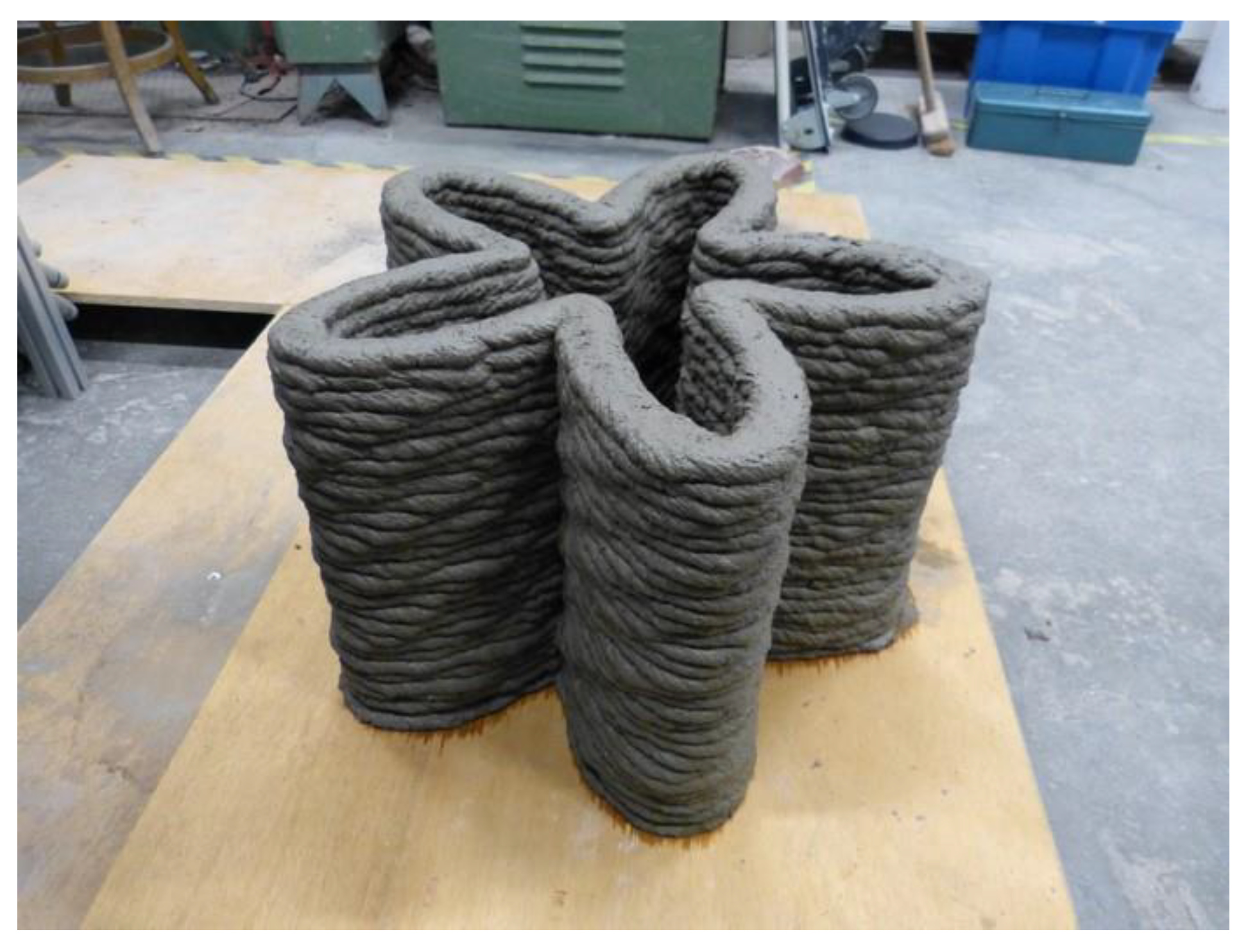
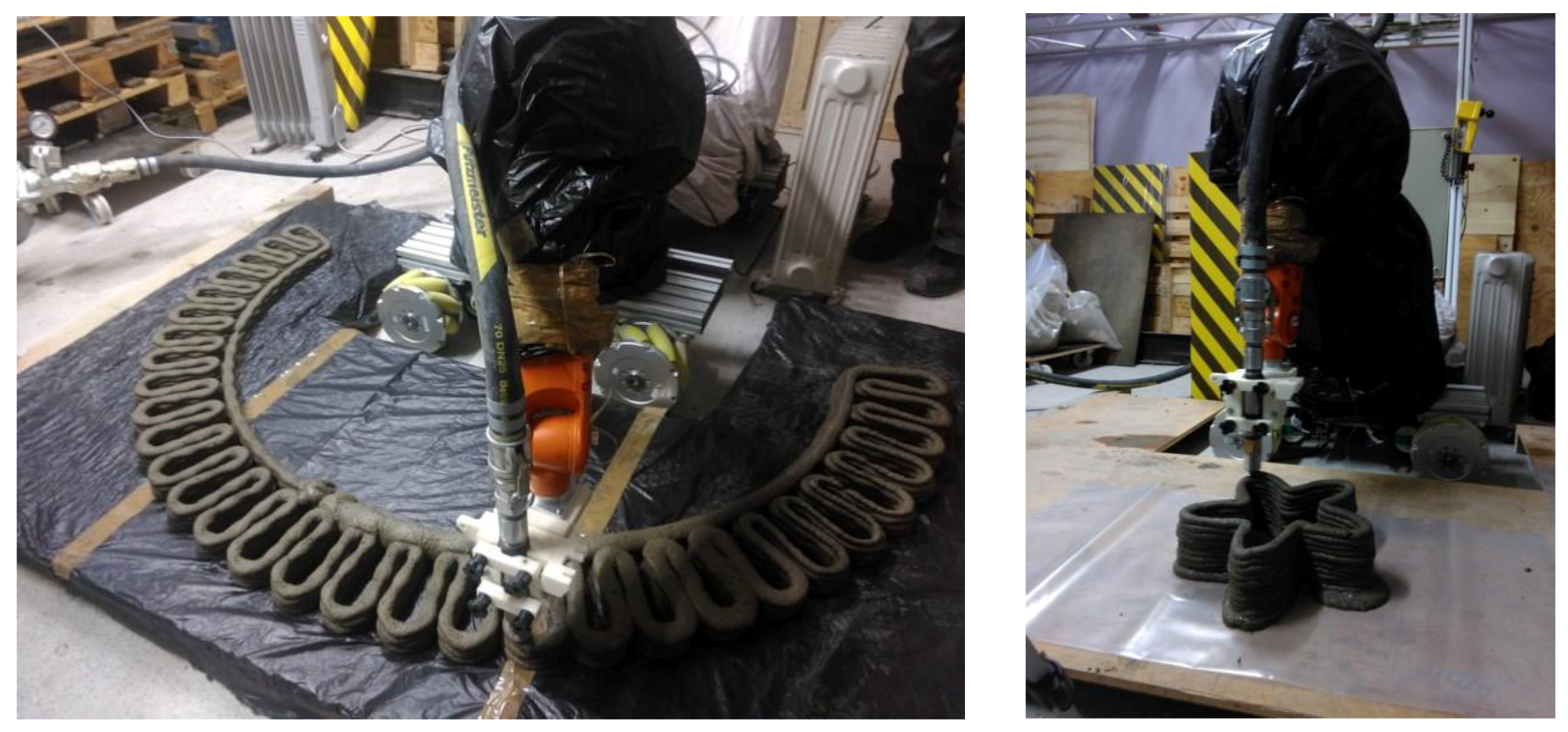
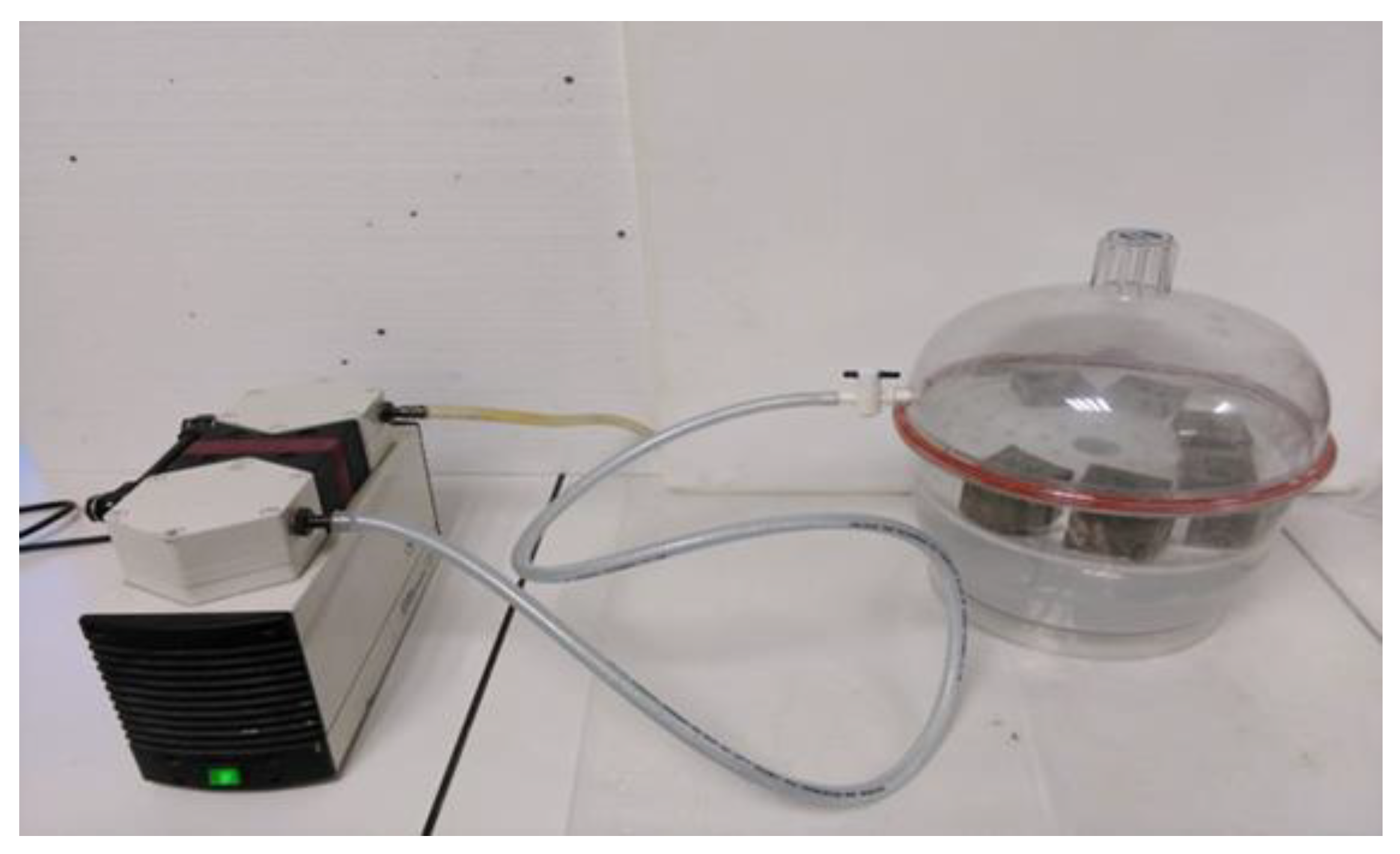
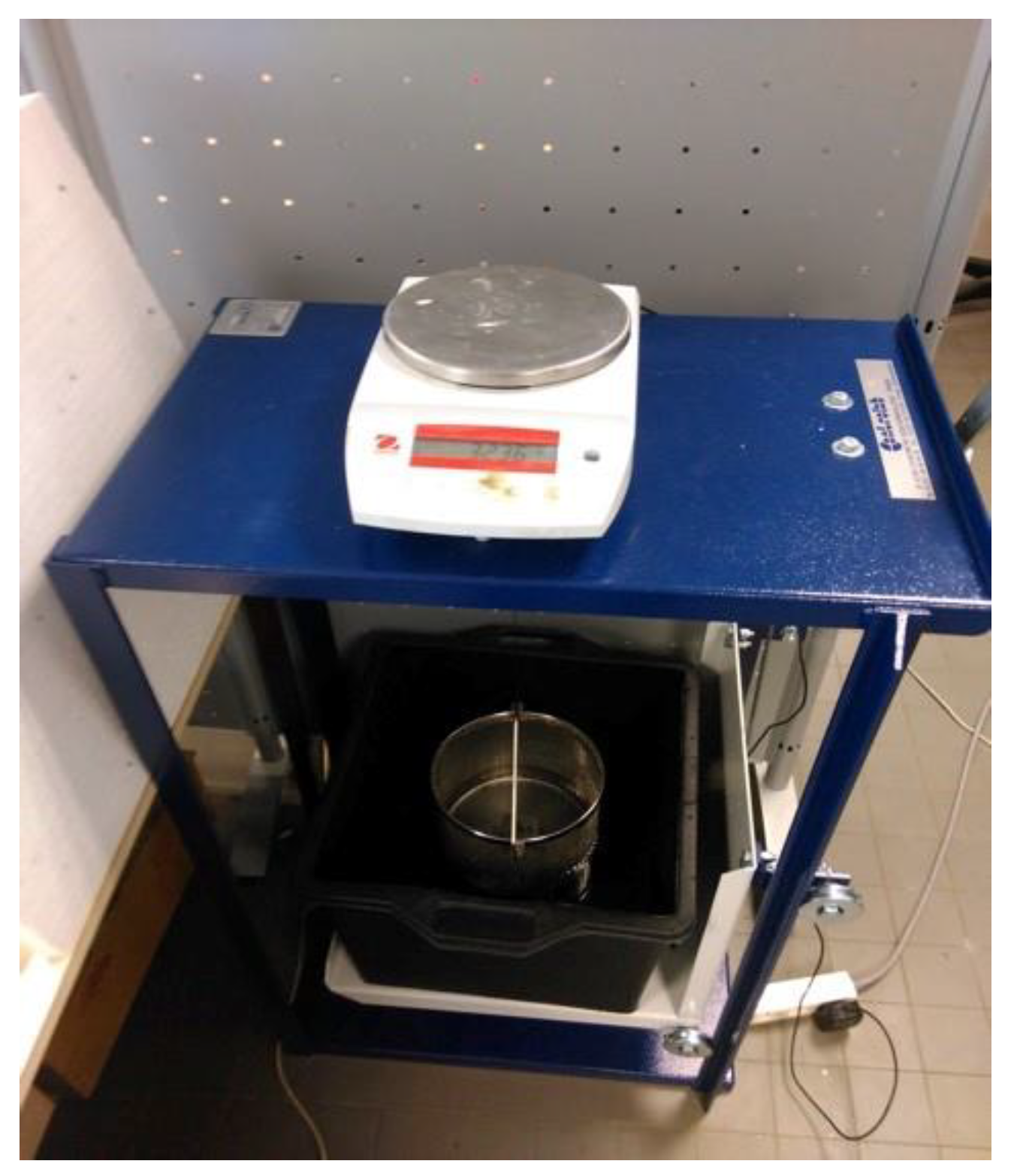
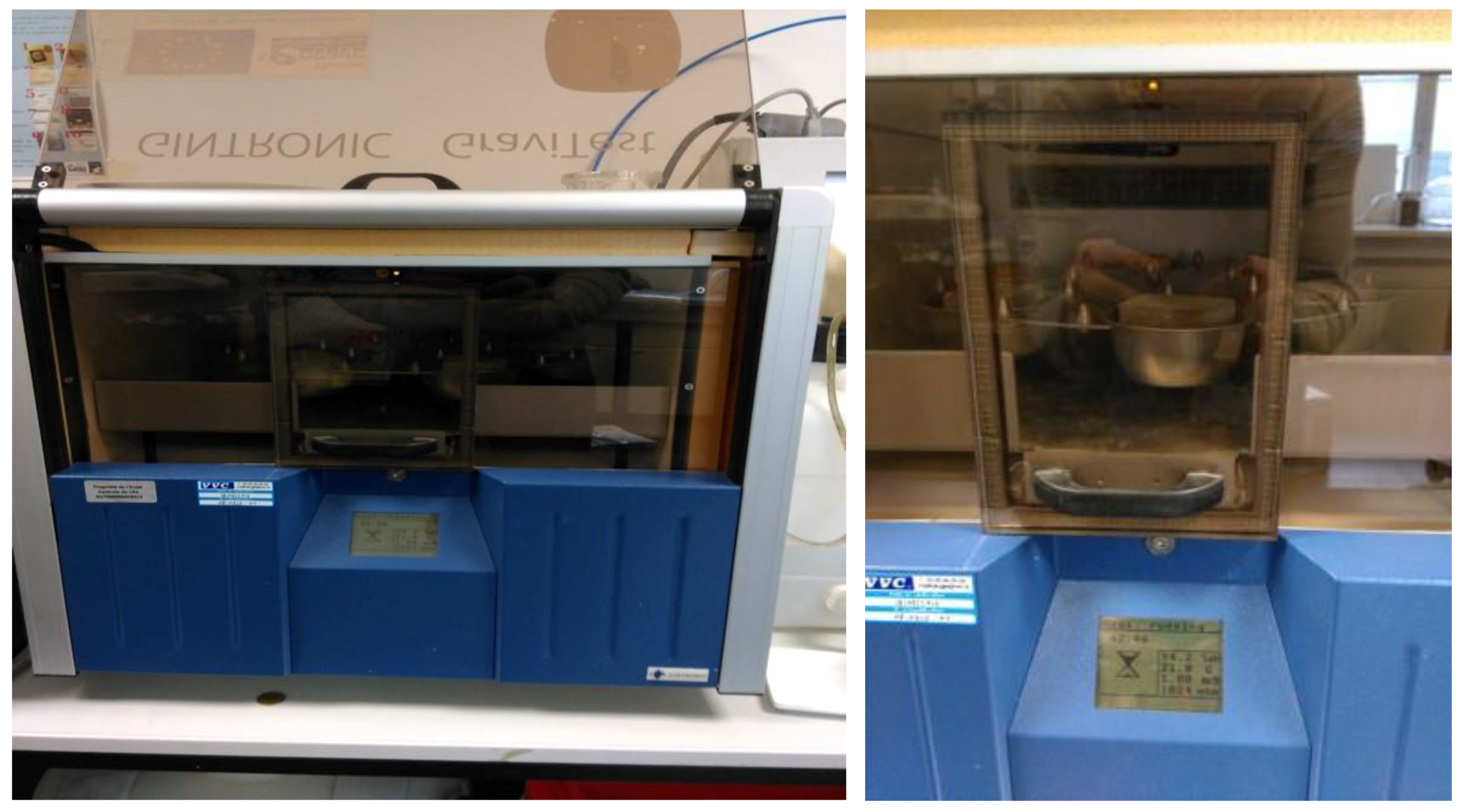
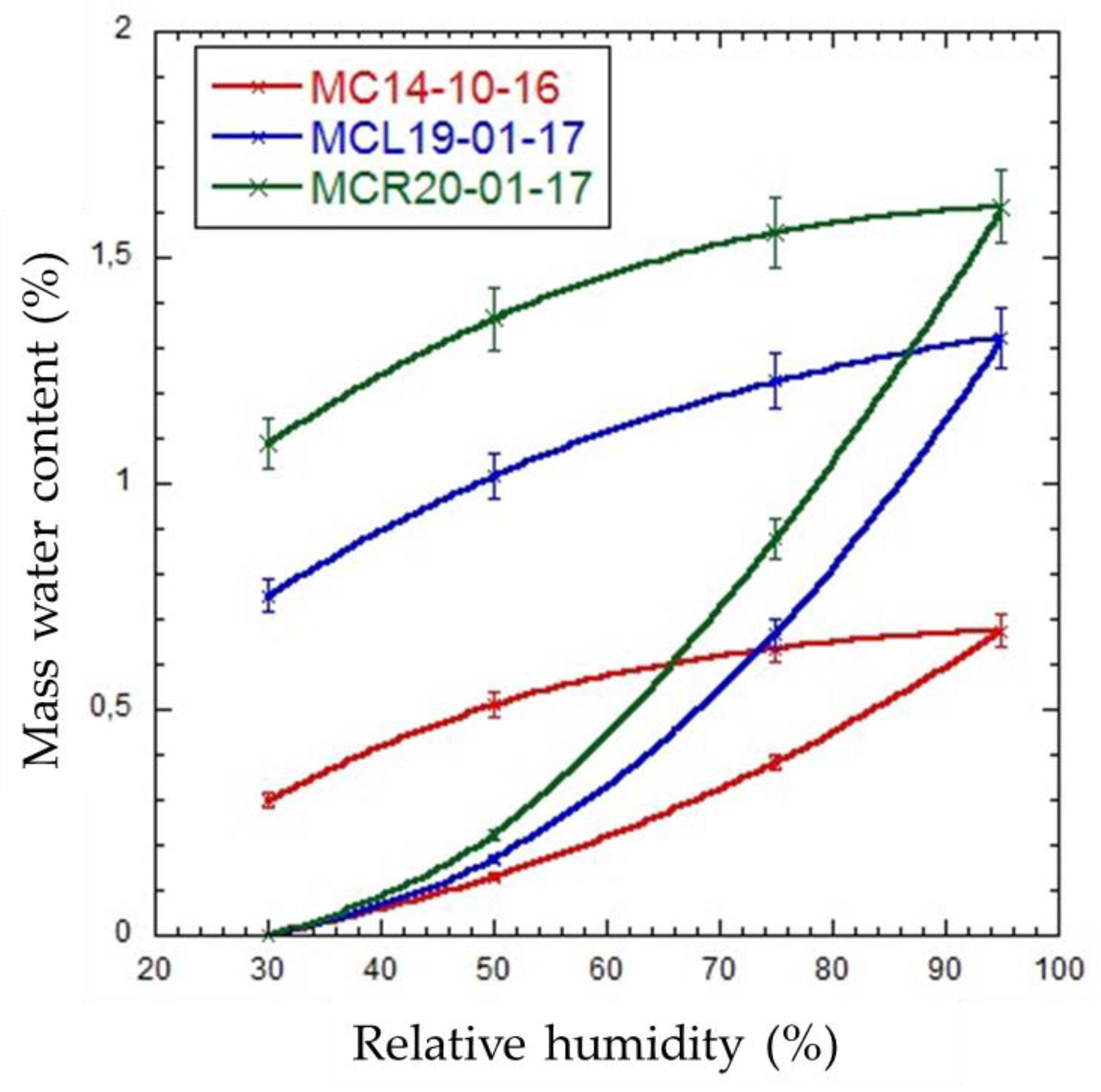
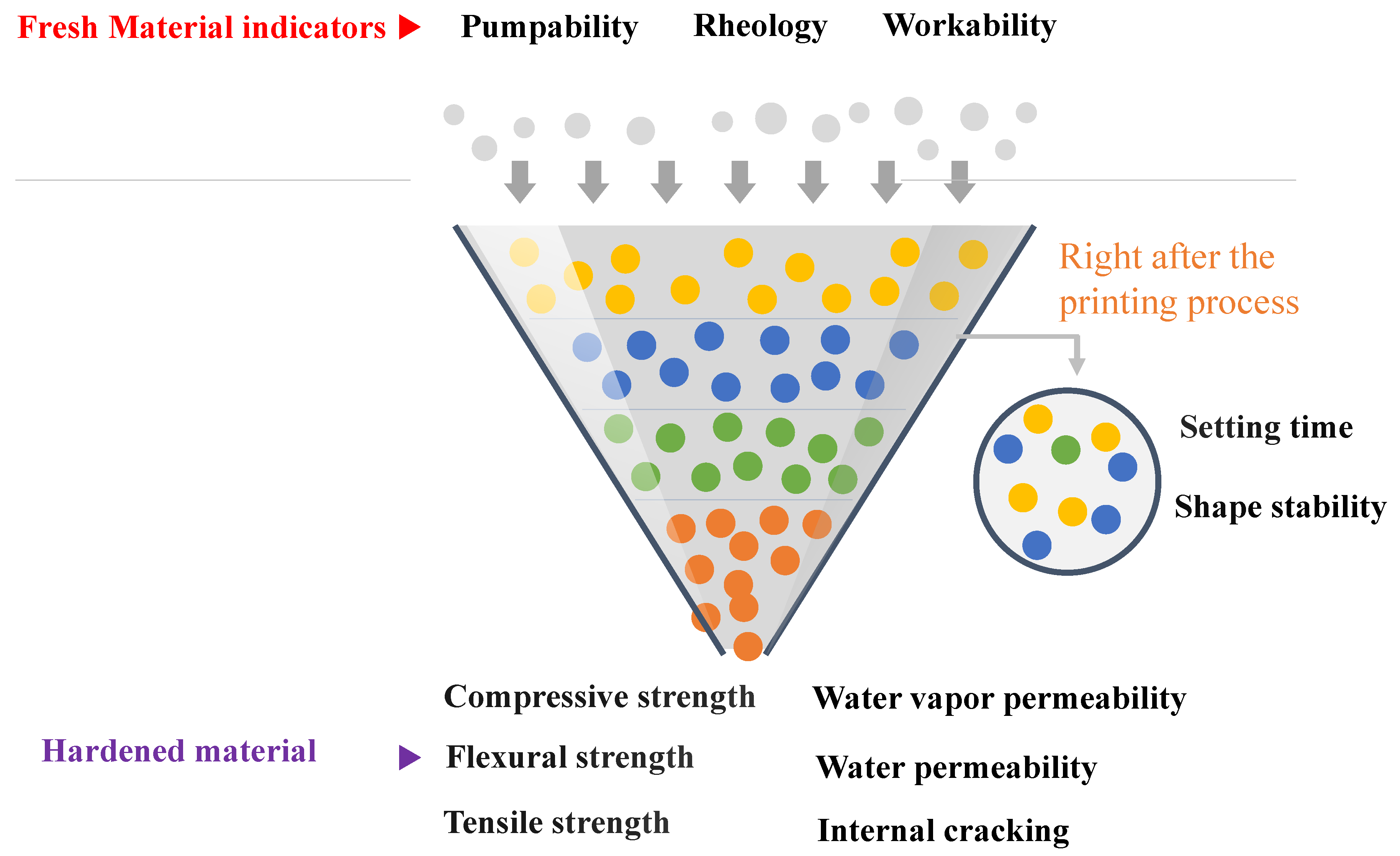
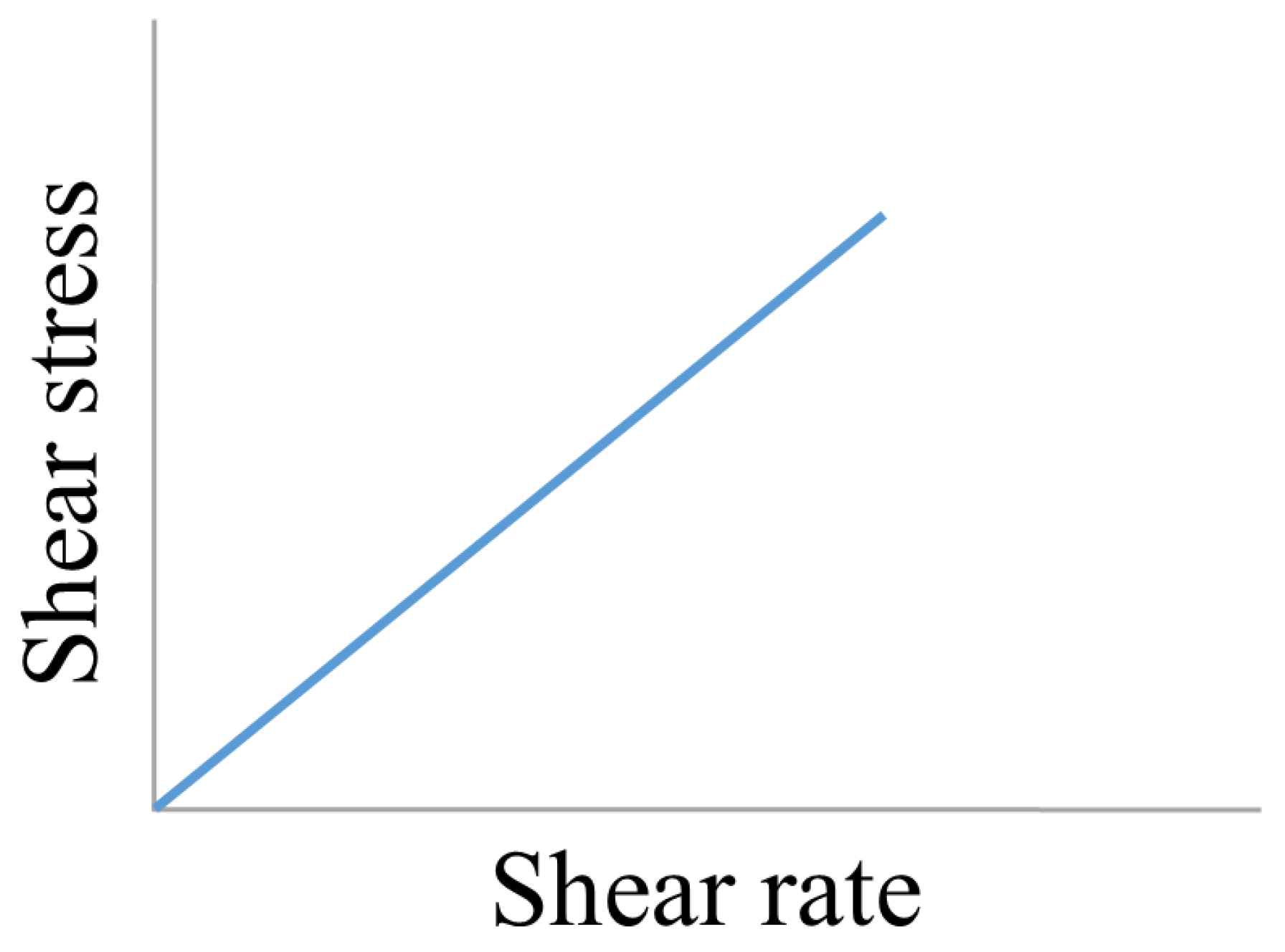
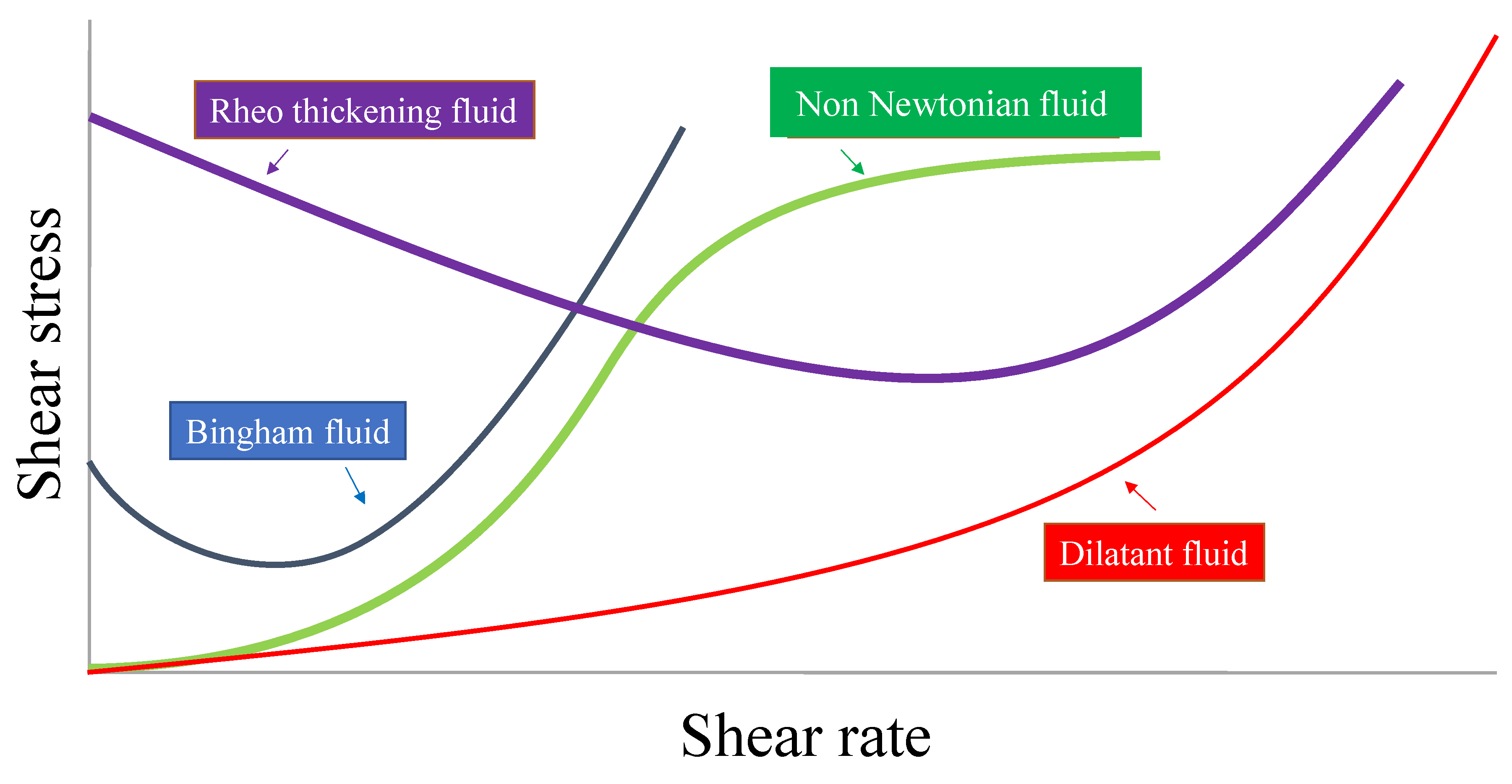
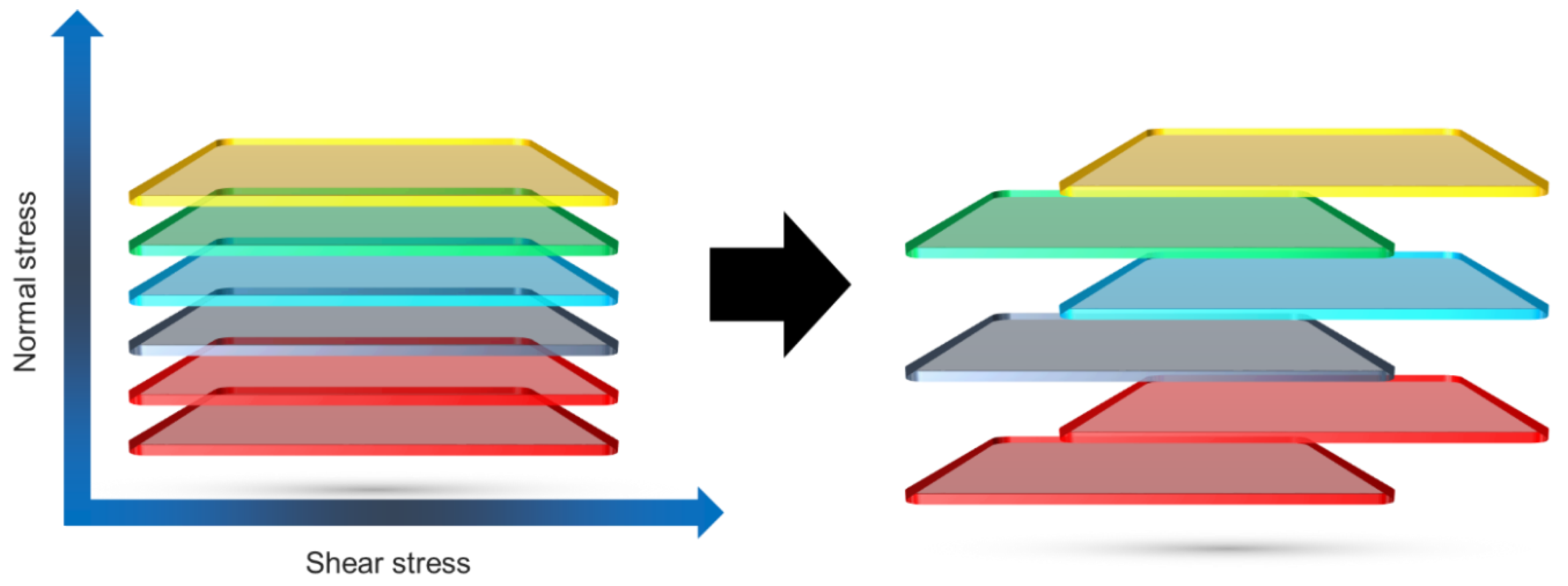

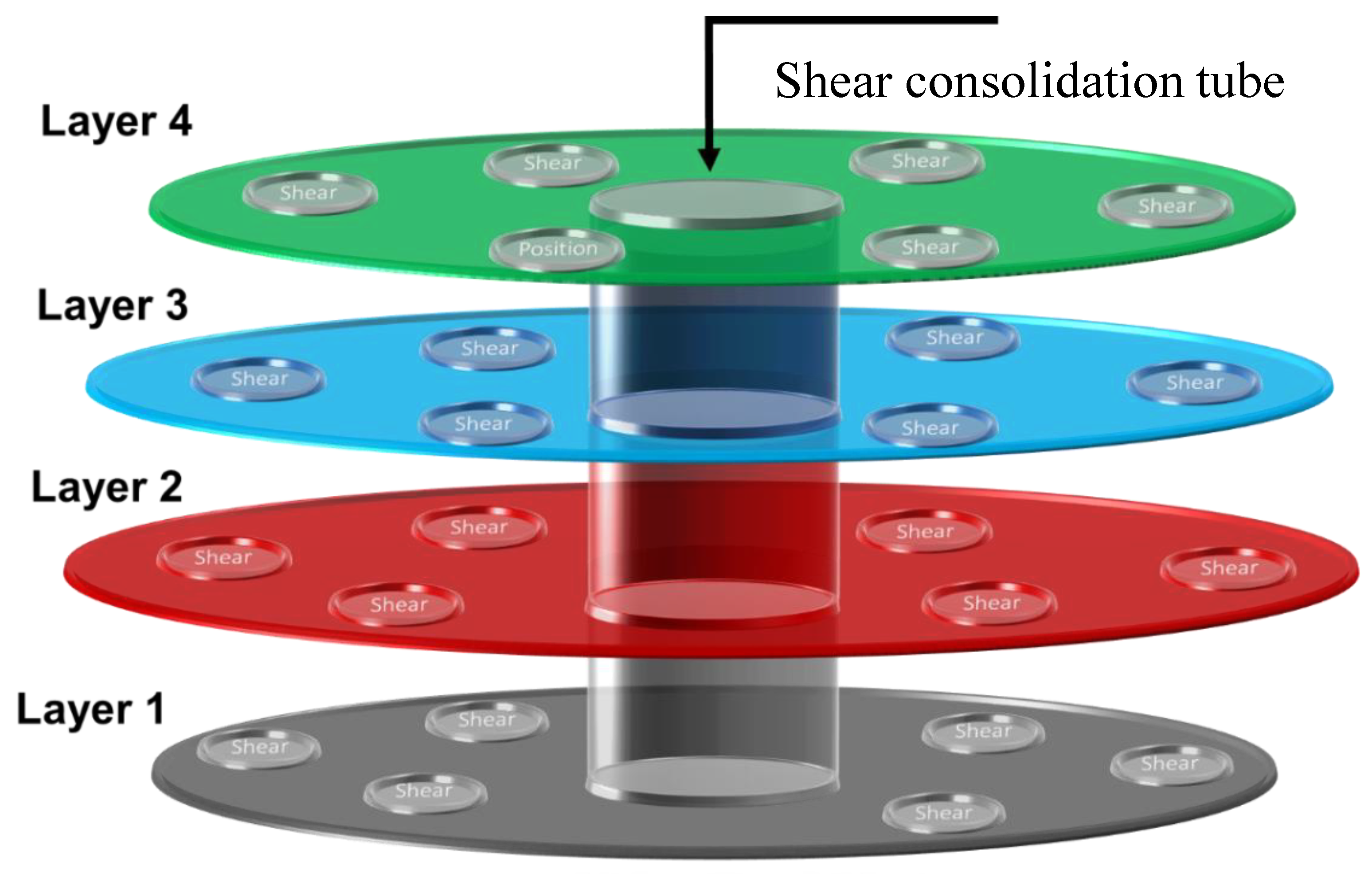
| Parameters to be Determined | Method | Deadline for the Result | Duration of the Test | Precision | Cost Evaluation | Observation | |
|---|---|---|---|---|---|---|---|
| General durability indicators | Water porosity | Hydrostatic weighting | 15 days | 3.5 months | 1.5% | * | |
| Apparent or effective chloride diffusion coefficient | Migration in a steady state | 15 days | 4 months | 15% of the average value | ** | ||
| Migration in a non-stationary mode | 1 week | 3.5 months | 15% of the average value | ** | |||
| Diffusion in a non-stationary mode | 3 months | 6 months | 15% of the average value | *** | |||
| Gas permeability | CEMBUREAU | 45 days | 4.5 months | 30% of the average value | ** | Specific equipment | |
| Permeability to liquid water | Pressurized water permeameter (NFP 18-855) | 15 days | 3.5 months | 1 order of magnitude | * | ||
| CaOH2 content | ATG | 1 week | 3.5 months | 1.5% | ** | Specific equipment | |
| Chemical analysis | 1 week | 3.5 months | 2% | * | |||
| Parameters required for the application of indirect methods | Characteristics of the porous structure | Mercury intrusion measurements | 15 days | 3.5 months | 1.5% | ** | Specific equipment |
| Electrical resistivity | [ANDR01] | 1 week | 3.5 months | 10% of the average value | * | ||
| Isotherms of water vapor sorption | Methods of saturated saline solutions (LPC n°58) | 6 months | 9 months | 10% of the average value | *** | ||
| Isotherms of interaction matrix–chlorides | Ex. Immersion | 2 months | 5 months | 10% of the average value | ** | ||
| Alkali reaction–Specific indicators | Quantity of silica released by aggregates as a function of time | Cinetic test NFP 18-589 or modified cinetic test NFP 18-594 | 1 week | 1 to 2 weeks | 10% of the average value | ** | |
| Balance of the alkalis in the concrete formula | LPC n°17 and 48 | 1 week | 1 week | 0.1 | ** | ||
| Swelling deformation | Project NFP 18-454 | 5 months | 5 months | ±20 (µm/m) | *** |
| Durability indicators | MC14-10-16 | MCL19-01-17 | MCR20-01-17 |
|---|---|---|---|
| Compressive strength (%) | 39,67 | 29 | 11,35 |
| Water absorption (%) | 5,9 | 6,7 | 8,2 |
| Accessible Porosity to water (%) | 12,8 | 14,6 | 17,5 |
© 2019 by the authors. Licensee MDPI, Basel, Switzerland. This article is an open access article distributed under the terms and conditions of the Creative Commons Attribution (CC BY) license (http://creativecommons.org/licenses/by/4.0/).
Share and Cite
Lafhaj, Z.; Dakhli, Z. Performance Indicators of Printed Construction Materials: a Durability-Based Approach. Buildings 2019, 9, 97. https://doi.org/10.3390/buildings9040097
Lafhaj Z, Dakhli Z. Performance Indicators of Printed Construction Materials: a Durability-Based Approach. Buildings. 2019; 9(4):97. https://doi.org/10.3390/buildings9040097
Chicago/Turabian StyleLafhaj, Zoubeir, and Zakaria Dakhli. 2019. "Performance Indicators of Printed Construction Materials: a Durability-Based Approach" Buildings 9, no. 4: 97. https://doi.org/10.3390/buildings9040097
APA StyleLafhaj, Z., & Dakhli, Z. (2019). Performance Indicators of Printed Construction Materials: a Durability-Based Approach. Buildings, 9(4), 97. https://doi.org/10.3390/buildings9040097






